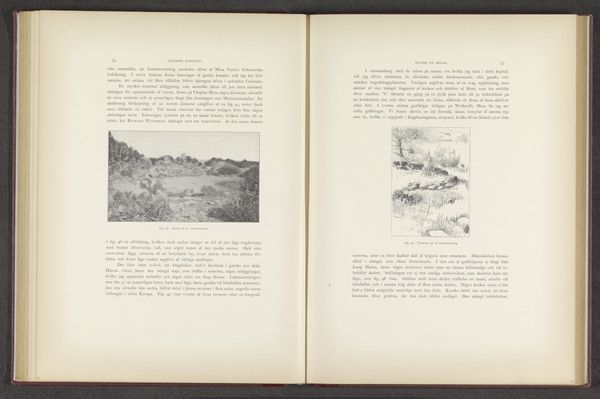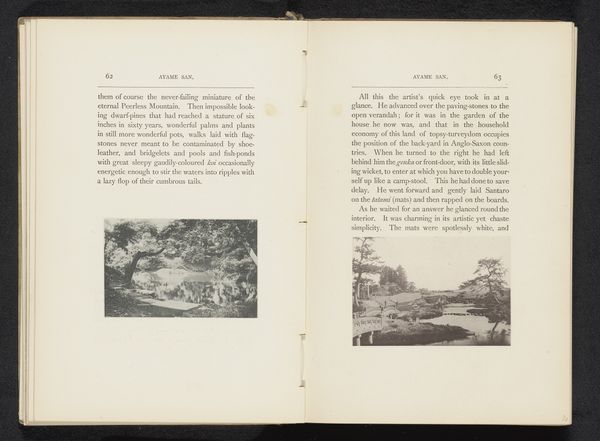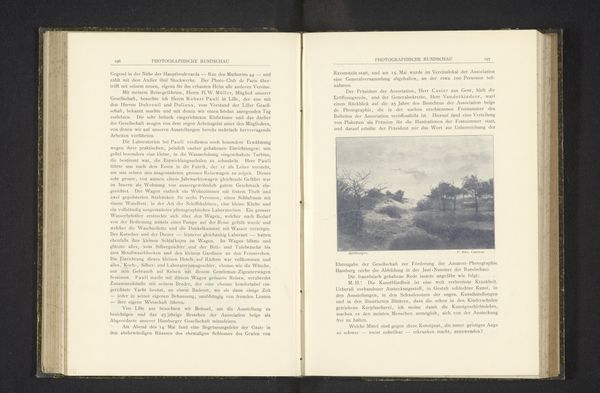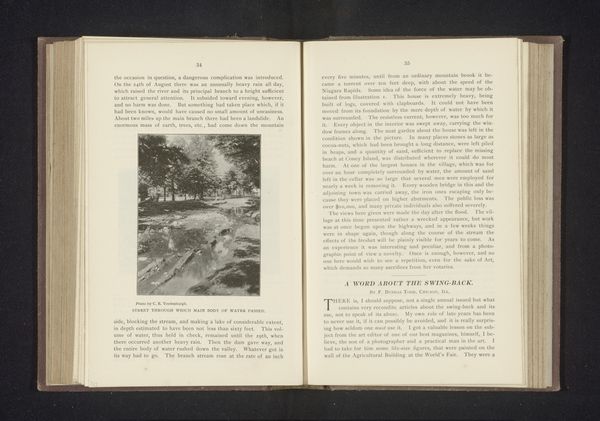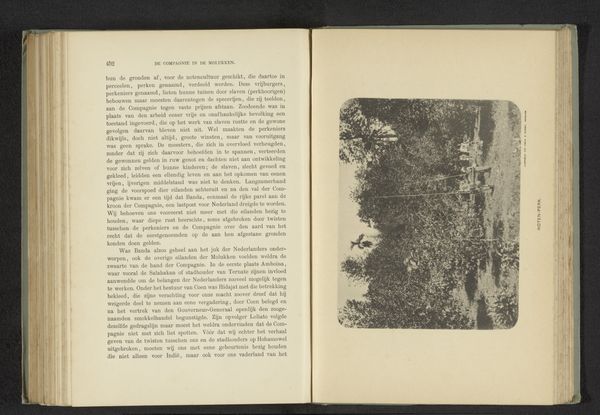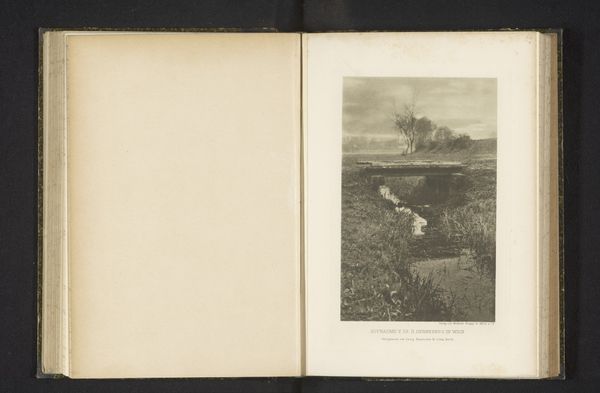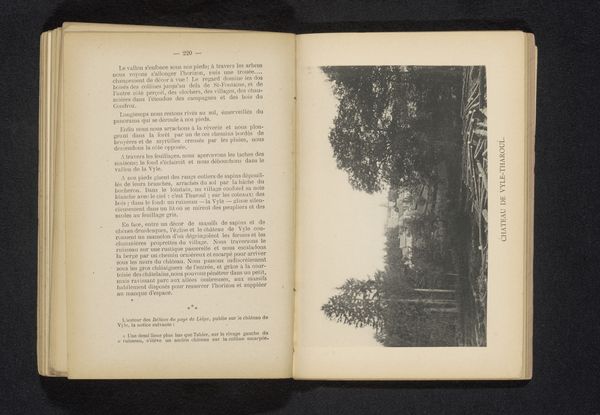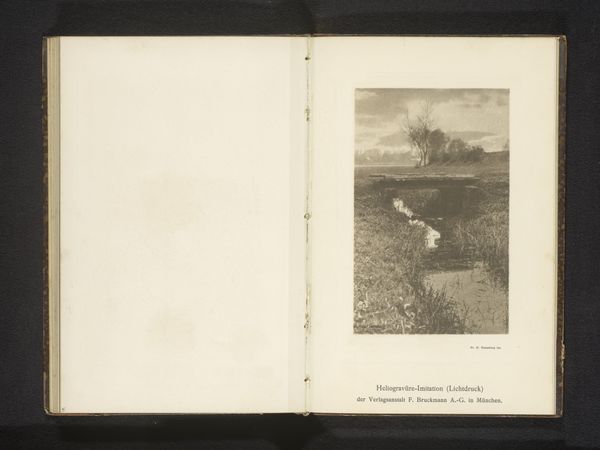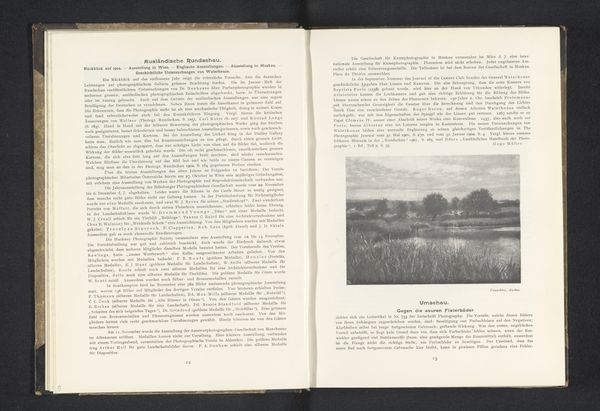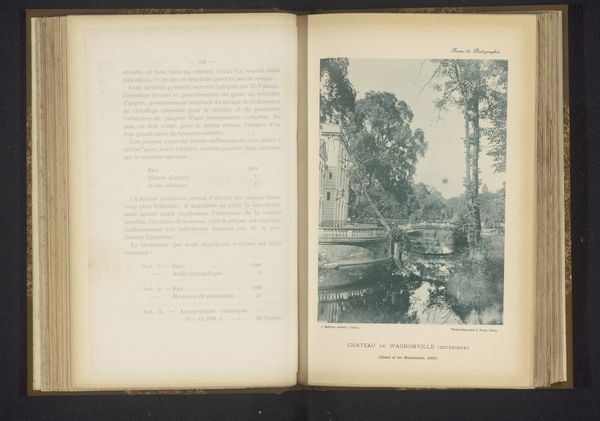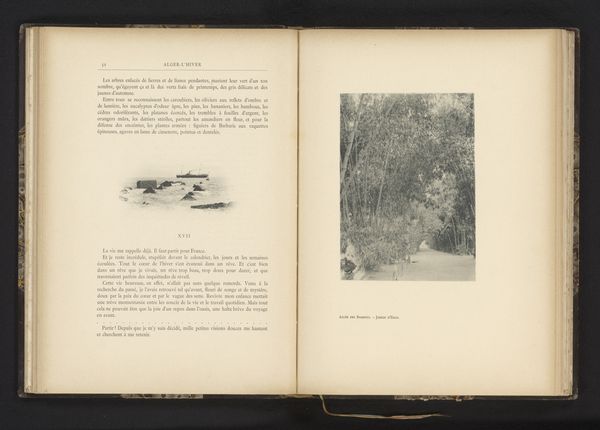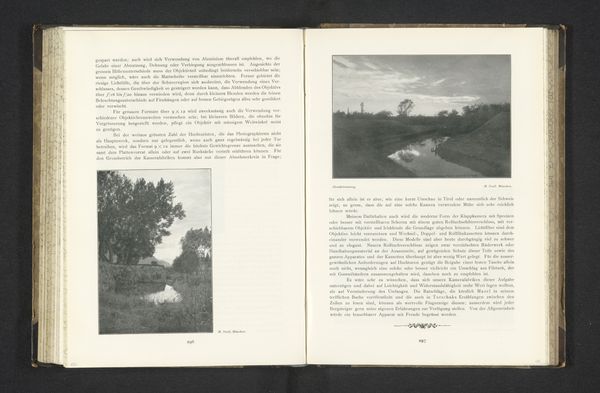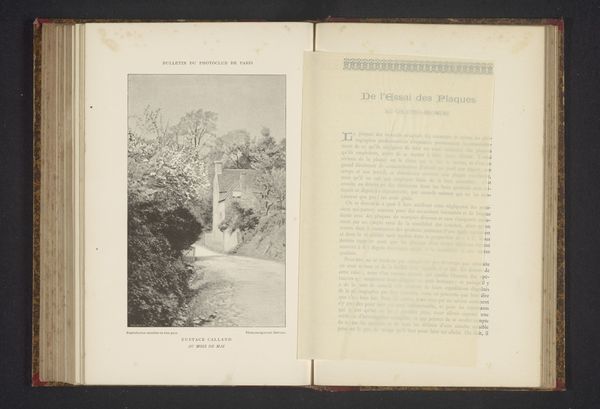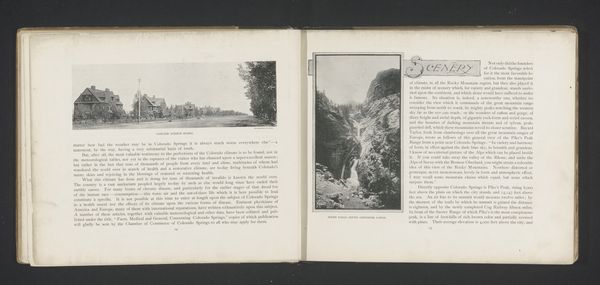
Meisje met een doek en bloemen in haar haren loopt langs een waterkant before 1895
0:00
0:00
print, photography, gelatin-silver-print
#
portrait
# print
#
landscape
#
photography
#
gelatin-silver-print
Dimensions: height 130 mm, width 77 mm
Copyright: Rijks Museum: Open Domain
Curator: Let's delve into this photograph, dating from before 1895: "Meisje met een doek en bloemen in haar haren loopt langs een waterkant," or, in English, "Girl with a cloth and flowers in her hair walking along a waterfront," attributed to Emma Justine Farnsworth. It’s a gelatin silver print, a fascinating medium choice for the era. What catches your eye? Editor: It’s ethereally sad. The pose seems to capture a moment of serene surrender to an unseen fate; her flowing garb blends with the reeds, nearly fading. It almost feels like an early exploration into portraying the unseen—an attempt to photograph a feeling more than a reality. Curator: Indeed. Farnsworth was working at a time of great experimentation in photography. The gelatin silver process was significant in its wider commercial use allowing for finer detail and easier mass production than previous photographic techniques. We are truly witness to that. But it also raised anxieties about photography's status as "art" versus industrial product. Editor: That’s where my eye naturally goes – to the labor! Here, with the introduction of the gelatin silver print to photography, art is moving further into mechanical reproducibility—the labor-intensive process hidden beneath layers of glossy surface. Where once an artisan had labored manually over an individual Daguerrotype, a factory could pump out hundreds of Farnsworth's visions, thus diluting the “art” status while capturing detail otherwise unseeable with past technologies. Curator: A good point! The romanticism intertwined with that sense of inevitable mechanical reproducibility, captures something important about our history. A desire to escape industrialisation, reflected in pastoral subjects that would be widely reproduced, to varying artistic effect, with little regard for its context or means of production. Editor: Precisely. Consider her clothing— it evokes historical garments from Renaissance portraiture more than functional apparel from her day and it blends with the background, drawing emphasis instead to its reproducible detail. Curator: This takes us back to the material. It highlights that the materials and technologies have impacted photography so that any given photo is more than the representation, even if beautiful like this. The artistic essence exists in tension to what these things represent. It makes one think. Editor: Absolutely. Thinking critically about materials connects us with this piece far beyond a quick, aesthetic response. What seems ethereal suddenly feels weighty.
Comments
No comments
Be the first to comment and join the conversation on the ultimate creative platform.
